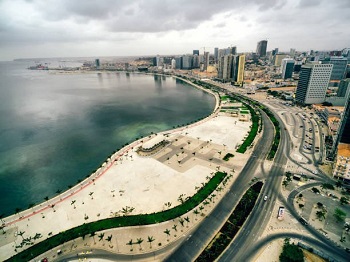Luanda
- Kaohsiung
- Los Angeles
- Shimonoseki
- Barcelona
- Rio de Janeiro
- Vladivostok
- Shanghai
- Surabaya
- Victoria
- Tijuana
- Ho Chi Mihn
- Auckland
- Valparaiso
- Western Cape
- Montreal
- Istanbul
- Dubai
- Fukuoka
- Chicago
- St. Petersburg
- Phnom Penh
- Mumbai
- Thessaloniki
- Casablanca
- Cebu
- Yangon
- Mombasa
- Luanda
- Dar es Salaam

Luanda
Official Website : https://luanda.gov.ao/ao/
Overview
- Governor: Luis Manuel da Fonseca Nunes
- Area: 116 km² (city administrative area), 1,876 km² (metropolitan area)
- Population: ~9–10 million (2025 estimate, metro/urban agglomeration)
- Location: Western Africa, on the Atlantic coast
- Climate: Semi-arid climate, with distinct wet and dry seasons; average temperatures 23–30°C
- Language: Portuguese (official), widely used in government, business, and education
- Currency: Angolan Kwanza (AOA)
At a Glance
Capital and largest city of Angola, serving as the country’s political, economic, and cultural center.
- Economy: Highly dependent on oil and petroleum products; key industries include refining, petrochemicals, cement, metals processing, and manufacturing.
- Cost of Living: Among the highest in the world for rent and general expenses.
- Industry: Limited local manufacturing; most intermediate and consumer goods are imported.
- Port of Luanda: The primary gateway for Angola’s imports and exports, playing a critical role in the country’s logistics and trade.
- Urban Development: Rapid urbanization and expansion in both residential and commercial sectors.
- Historical Note: Originally a colonial outpost of Portugal, now a modern, densely populated metropolis with a mix of colonial heritage and contemporary architecture.
